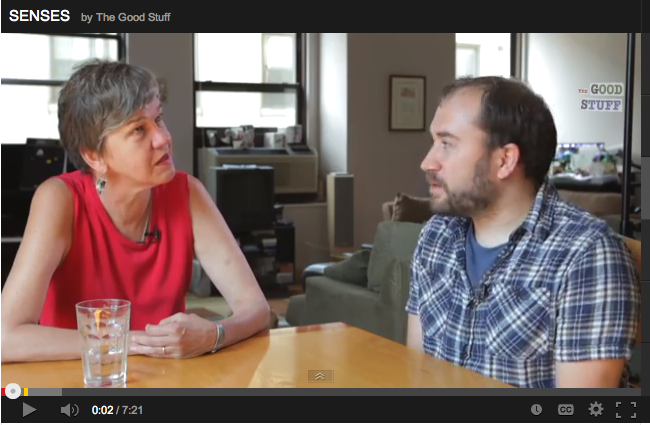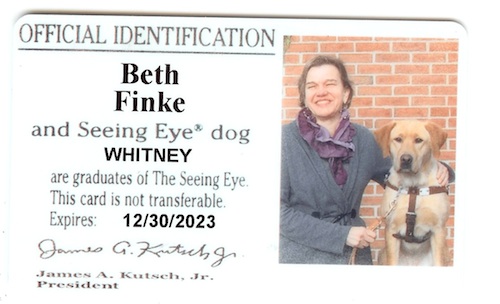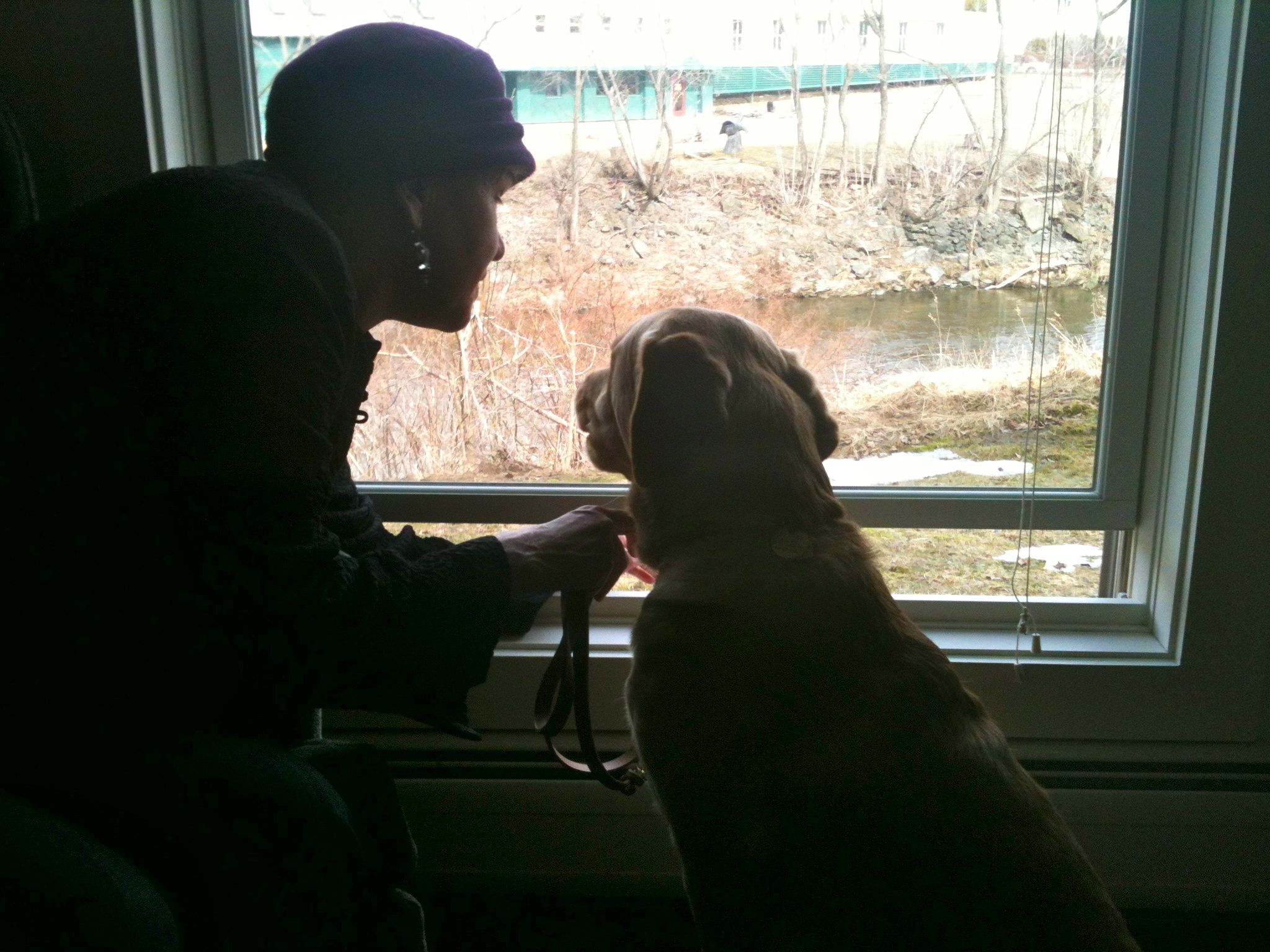Now on video! See what it's like to go blind!
September 27, 2013 • 34 Comments • Posted in blindness, Blogroll, guide dogs, Mike Knezovich, radio, Seeing Eye dogs, UncategorizedI was tickled to discover my What’s it Like to go Blind segment up on The Good Stuff channel this week.
Funny thing, though. I can’t see the video!
I can hear the show on YouTube, though, and, really, all you have to do is listen to know how much fun my Seeing Eye Dog Whitney and I had earlier this month when four guys from The Good Stuff spent an afternoon with us taping this week’s segment. Friends and family members who have seen the finished product on The Good Stuff this week have written me and posted links on Facebook – they all give the What’s it Like to Go Blind segment a hearty thumbs-up.
Craig Benzine, the guy who conducted my interview on The Good Stuff, is very familiar with YouTube: he already has an uber-popular vlog there called Wheezy Waiter that has half a million followers. In a blog post on Wheezy Waiter, he explained why he decided to start The Good Stuff channel now, too:
“There’s this type of entertainment I enjoy that I can only really find in podcast form, specifically from the shows Radiolab and This American Life. They take a topic and delve into it from all sides. That could be short stories, news stories, stand up comedy, interviews, etc. These shows give me a certain feeling when I’m done listening to them that I really don’t find much on YouTube. I guess it’s sort of a feeling that everything’s connected and you can find interesting things and people everywhere you look. With The Good Stuff, we’re attempting to get at that feeling, at least a little, and do it with video.”
The theme for the show I’m on this week is Senses. Before shooting a single frame for my segment, Craig and fellow Good Stuff staff members Sam Grant, Matt Weber and David Wolff spent nearly an hour figuring out the ideal way to film inside our apartment, which angle to shoot from and where the lighting would look best. From what my husband Mike Knezovich says, their fussiness was worth it. “They make our apartment look great!” he marveled. The Good Stuff puts tons of time and scientific research into all its video segments, and this one does not disappoint. A graphic of the inside of an eyeball shows up on screen while I explain retinopathy (the disease that caused my blindness), they got down on Whitney’s level to film shots of her working outside, and they fade to black at appropriate times while I try to explain how I picture things I can’t see.
The video sounds good, too. Mischievous music that sounds like it’s from a Three Stooges episode plays while I take Whitney out to “empty,” and if you listen closely you’ll hear me playing Duke Ellington’s C Jam Blues on the piano for a few seconds, too.
But wait. Why describe all this to you? You all can check out the What It’s Like to Go Blind video yourself. If you like what you see/hear, I hope you’ll consider donating to The Good Stuff. The videos on The Good Stuff are all available free of charge, staff members fund their work with day jobs: waiting tables, doing other film work, and one guy works at a family shoe store. Craig says they feel fortunate and extremely grateful to have received a grant from Google earlier this year, but that money will run out soon, and it sure would be swell to keep The Good Stuff going. Just think. With our help, The Good Stuff can get even better.




